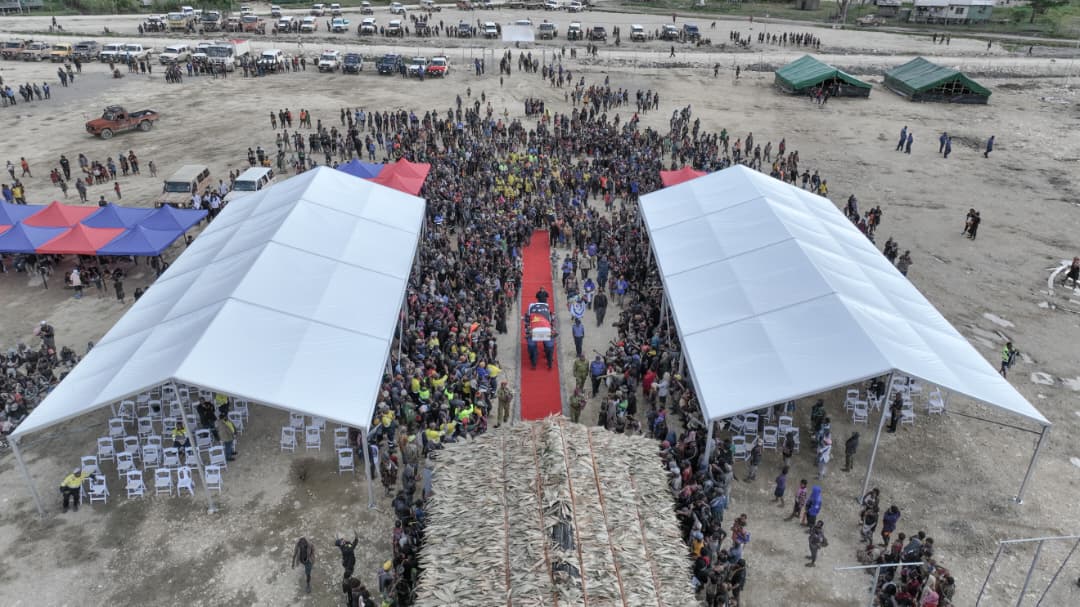Key Strategic Corridors
- by DoWH
- 13th December 2024
1. Highlands Highway Corridor
- Connects Lae to the Highlands provinces, serving as Papua New Guinea’s economic lifeline.
- Facilitates the transport of agricultural produce, coffee, and mining exports to Lae Port.
- Reduces travel time for goods, enhancing the profitability of trade.
- Provides access to healthcare, education, and markets for remote highland communities.
- Supports economic activity in major provinces such as Eastern Highlands, Chimbu, and Western Highlands.
2. Hiritano Highway Corridor
- Links Port Moresby to Gulf Province, a key coastal region.
- Improves access to fishing and agricultural markets in Gulf Province.
- Reduces isolation for coastal villages, promoting regional tourism.
- Enhances resilience to seasonal flooding with climate-resilient upgrades.
- Shortens travel time to the capital, boosting trade and economic integration.
3. Ramu Highway Corridor
- Connects Morobe, Madang, and Eastern Highlands Provinces.
- Strengthens the agricultural and mining supply chain from inland areas to coastal ports.
- Facilitates tourism to key destinations like Madang.
- Enhances trade and regional connectivity between highland and coastal provinces.
- Supports disaster response and evacuation during floods or landslides.
4. Trans-National Corridor
- Links Lae, Buolo, and Epo, enabling efficient trade between industrial and agricultural zones.
- Boosts agricultural exports from rural areas to Lae Port.
- Reduces transportation costs for goods and services.
- Encourages investment in industrial growth zones.
- Promotes job creation in rural districts.
5. Momase Coastal Corridor
- Connects East Sepik and West Sepik provinces to regional economic hubs along the coast.
- Enhances access to coastal fisheries and markets, supporting livelihoods.
- Improves road access for remote villages, reducing travel time and costs.
- Facilitates tourism to culturally significant sites in the Sepik region.
- Strengthens inter-provincial trade and mobility.
6. Southern Corridor
- Provides connectivity between Port Moresby, Alotau, and Gulf Province.
- Boosts regional trade and access to coastal fishing and agricultural products.
- Promotes tourism to southern regions, including Milne Bay.
- Enhances disaster resilience by improving evacuation routes.
- Provides reliable access to healthcare and education in rural areas.
7. New Britain Corridor
- Links Kimbe and Kokopo, two key towns on New Britain Island.
- Facilitates the transport of cash crops like palm oil and cocoa to export hubs.
- Enhances tourism access to volcanic landscapes and coastal attractions.
- Reduces logistical costs for inter-district trade on the island.
- Strengthens regional economic integration and connectivity.
8. Sepik Coastal Corridor
- Connects East Sepik and West Sepik along the coastline.
- Enhances fishing, agriculture, and tourism opportunities along the coast.
- Provides reliable access for goods and services to remote coastal communities.
- Supports environmental conservation by offering sustainable transport alternatives.
- Improves disaster response during cyclones or coastal flooding.
9. Central Highlands Corridor
- Links central highlands regions to urban centers and trade hubs.
- Boosts the agricultural economy by improving access to markets.
- Enhances mobility for residents in mountainous terrain.
- Reduces costs for goods transportation and services.
- Promotes regional tourism to highland cultural sites.
10. Northern Coastal Corridor
- Connects coastal regions with inland districts.
- Improves access for remote communities to essential services.
- Facilitates trade between inland and coastal areas.
- Reduces isolation and encourages economic participation in rural regions.
- Promotes the export of local seafood and agricultural goods.
11. Papuan Coast Corridor
- Runs along the southern coast, connecting Port Moresby to other coastal districts.
- Enhances access to fishing and farming communities.
- Improves transport efficiency for local goods and regional exports.
- Reduces logistical barriers for rural development programs.
- Strengthens regional disaster preparedness and response.
12. Western Connection Corridor
- Links Western Province to the national road network.
- Breaks long-standing isolation for remote communities in Western Province.
- Encourages eco-tourism to pristine forest and wetland regions.
- Promotes local development by providing access to healthcare and education.
- Enhances trade opportunities for agricultural and natural resource products.
13. Gulf-Simbu Connection Corridor
- Establishes connectivity between Gulf Province and Simbu, a mountainous region.
- Reduces transportation challenges in difficult terrain.
- Improves access to essential services for isolated communities.
- Supports local economic activities by connecting rural areas to regional hubs.
- Promotes sustainable tourism to natural and cultural heritage sites.
14. East-West Highway Corridor
- Provides a direct link between the eastern and western regions of Papua New Guinea.
- Enhances trade and mobility across the nation, fostering regional unity.
- Reduces travel times for goods and services, improving market efficiency.
- Strengthens inter-provincial collaboration and development.
- Provides critical access for national projects and initiatives











media_release_11.13.2025_(1).jpeg?v=20251117205730)
.jpeg?v=20251112201044)